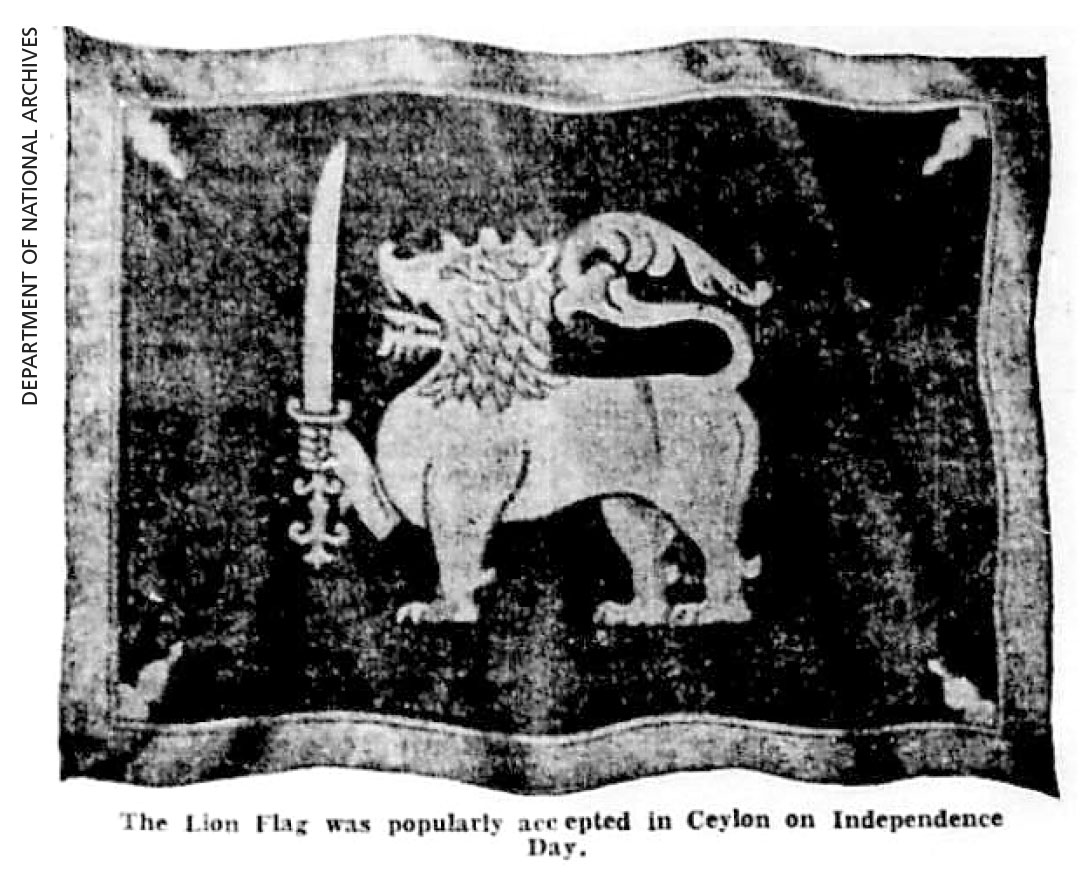1948
One Flag, One Fate, One State, One Future
A chequered history – a standard with hope
A flag is a flag is a flag. Well, not really – because even the relatively uninspiring tricolours so beloved of much of the world have symbolic significance. And when it comes to Sri Lanka’s national flag, there’s an embarrassment of riches.
For instance, while the dominant motif – a golden lion passant – represents the majority Sinhalese ethnicity, as well as the bravery and strength of a nation at large – its sundry features symbolise a panoply of virtues.
These leonine characteristics include ‘purity of words’ (its beard); ‘intelligence’ (the nose); ‘prudence in managing wealth’ (anterior paws); ‘religious observance, meditation and wisdom’ (a curly mane); and ‘the Noble Eightfold Path’ of Buddhism (eight tail hairs).
The other elements of the flag similarly represent sterling ideals. Principal among these are a quartet of bo tree leaves symbolising the ‘four noble virtues’: mettā (loving kindness), karunā (compassion), muditā (empathetic joy) and upekkhā (equanimity).
Colours embrace the diversity of the island’s people: Tamil-Hindu (orange) and Muslim-Moor (green) – both added in 1951; and other ethnicities (the yellow border); of course, not omitting the dominant maroon background of ‘the lion race’!
The lion wields a kastana sword, typifying the sovereignty of the nation while its ornate handle encompasses the universal elements of fire, earth, air and water.
Indeed, the history of the national flag’s evolution is as rich as its symbolism – for instance, the lion is the oldest element in it, traditionally originating in the royal flag of legendary Prince Vijaya who alighted on these shores in the 6th or 5th centuries BC (the date varies from 543 BC to 486 BC).
It was the banner under which the historic King Dutugemunu marched to war – albeit a simpler version with only the lion on a field of red guarded by sun and moon – to rid the isle of invaders. Any semblance of sovereignty was foresworn when this lion flag was ceremonially lowered on 2 March 1815, following the British conquest of the entire island.
During the struggle for independence, a facsimile of the original lion flag was found at the Royal Hospital in Chelsea, UK.
From that time to the formalisation of the version that flew over a newly independent nation was a few years, and came by courtesy of a D. S. Senanayake appointed committee that comprised a galaxy of rising political stars on the national front.
The history of the national flag’s evolution is as rich as its symbolism – for instance, the lion is the oldest element in it, traditionally ascribed to the royal flag of legendary Prince Vijaya




